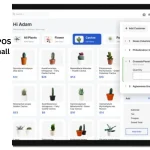E-learning refers to training programs delivered electronically through computers and the Internet. It has seen tremendous growth in recent years as more companies adopt it for employee training and development. Companies that implement e-learning for corporate training see gains in productivity, engagement, and retention. With customizable course content, data tracking features, and global reach, e-learning enables businesses to efficiently train large, dispersed workforces.
E-Learning for Corporate Training
As technology advances, e-learning continues to evolve as well. Companies now integrate interactive elements like gamification, virtual reality simulations, and social learning into training. While e-learning has its challenges, following best practices can help ensure successful corporate e-learning programs. With thoughtful implementation, e-learning provides businesses with a powerful tool for developing talent and driving growth.
Convenience and Accessibility
E-learning provides convenience and accessibility that traditional classroom training often lacks. Employees can learn anytime and anywhere through self-paced online courses and modules. This flexibility accommodates different employee schedules and availability.
E-learning eliminates the need to coordinate schedules and travel to a physical classroom location. Learners can access training materials remotely from home or while traveling for work. This removes geographic barriers for a globally distributed workforce.
With 24/7 availability, employees can fit training around their existing workload. They can learn at the times most convenient and effective for them. Self-paced modules allow employees to work at their own pace, whether slower or faster. They can pause and resume courses as needed. This level of flexibility and accessibility makes it easier for employees to integrate learning into their day.
Interactive and Engaging
E-learning allows for highly interactive and engaging training experiences through the use of multimedia content.
Simulations and scenario-based exercises provide immersive learning opportunities that replicate real-world situations and environments. Learners can practice skills and decision-making in a safe, simulated setting.
Assessments and knowledge checks can be built into e-learning courses to gauge learner comprehension and retention. These may include multiple-choice questions, drag-and-drop activities, or other interactive question types. Receiving real-time feedback helps reinforce knowledge.
Collaboration tools like discussion forums and live chat allow learners to discuss concepts, share perspectives, and learn from each other. This peer-to-peer learning adds a valuable dimension to the training.
The interactivity of e-learning boosts learner engagement and improves knowledge retention compared to passive learning methods. Applying concepts through scenarios and simulations also leads to better transfer of learning back on the job.
Customization
E-learning allows companies to easily customize training content for different roles, regions, and individuals. For example, sales training can be tailored to new hires versus experienced sales reps by adjusting the depth and breadth of the content. Similarly, compliance training can be personalized for different business units based on their specific regulations and policies.
The interactivity of e-learning also enables personalization through branching scenarios, personalized examples, and inserting the learner’s name into exercises. This not only makes the training more relevant but also improves engagement as learners feel the content was created just for them.
Adaptive learning takes personalization even further by using algorithms to analyze each learner’s responses and performance. It then adapts and tailors the training in real time to reinforce knowledge gaps and skip over mastered skills. This creates a truly personalized learning path for each individual.
The ability to easily customize and personalize e-learning is a key benefit for companies with diverse workforces across multiple locations. It allows them to provide tailored, targeted training efficiently at scale.
Also Read
Challenges
Developing effective learning content can be difficult and time-consuming. E-learning courses must be designed in a way that communicates concepts, provides practice opportunities, and keeps learners engaged. This requires instructional designers and subject matter experts who understand adult learning principles. It’s not as simple as just uploading a PowerPoint presentation online.
Motivating employees to complete the required training can also be a struggle. With an online self-paced course, it is easy for employees to put off training or multitask instead of focusing on the content. Gamification components such as points, badges, and leaderboards may assist increase involvement. But managers also need to follow up and hold employees accountable.
There is also the potential for technological issues to disrupt the e-learning experience. Internet connectivity problems, bugs in the learning management system, or lack of compatibility with certain devices could make it difficult for some employees to access and complete training. Strong IT support and extensive quality assurance testing are essential to minimize technical difficulties.
Overall, e-learning requires significant upfront investment and ongoing maintenance. But when done right, it can greatly improve workforce skills and engagement. Companies must adequately plan for the above challenges to ensure a successful implementation.
Also Read
Best Practices
One of the keys to successful corporate e-learning is following best practices when developing and implementing training programs. Here are some tips:
- Get Executive Buy-In
It’s important to get buy-in and support from leadership when launching an e-learning initiative. Make the business case by showing how it can save money on travel costs while improving employee skills. Present data on the effectiveness of e-learning for increasing retention rates. Having executives endorse the program helps drive adoption.
- Make Courses Relevant and Practical
For adult learners, courses must teach skills and knowledge they can apply immediately on the job. Avoid too much theory. Use realistic scenarios and examples. Let learners practice what they learn with exercises and assessments. This increases the likelihood they will retain information.
- Support Learners with Resources
Don’t just launch courses and expect employees to complete them on their own. Provide support resources like discussion forums, FAQs, and help desk contacts. Create brief video tutorials on how to navigate courses. Ensure the availability of subject matter experts to address inquiries. This helps ensure a positive e-learning experience.
Conclusion
E-learning has emerged as an attractive corporate training option, offering many benefits for both employers and employees. By utilizing e-learning for corporate training, companies can reduce training costs, deliver standardized content across locations, track learning progress, and provide convenient access to training materials. Employees gain flexibility in when and where they learn. With e-learning, they can access training modules on their schedule without travel or time away from normal work duties. Ultimately, companies must evaluate their unique needs and cultures to determine if and how to implement e-learning. With proper strategy and execution, e-learning can be a cost-effective way to train a modern, decentralized workforce. Yet it should enhance, not eliminate, the human connections that in-person learning fosters.







